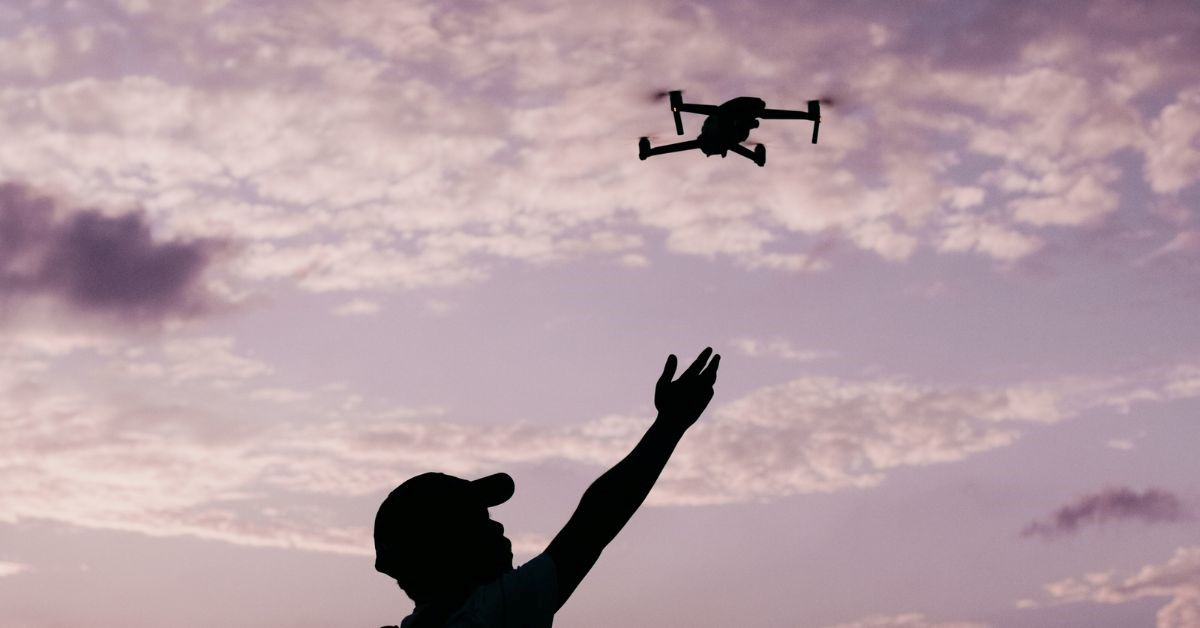Guide to Understanding Flight Time for Different UAVs

The widespread availability of drones has broadened the demographic benefiting from technological advancements. Various industries have benefited from its capabilities, thus making it a digitalized multi-industrial tool. However, there is more to consider when buying drones for your specific needs. A commercial drone’s pricing is generally the first consideration, even before the drone’s capabilities.
One of the many factors that you need to consider when purchasing a drone is its flight time. Battery capacity is a contributing factor if you need longer flight times to cater to the demands of your industry. In line with that is the need to understand that Flight time for different AUVs matters when integrating drone technology.
What Is There to Learn about UAVs drones?
Unmanned aerial vehicles (UAVs), also known as drones, are used more frequently in many applications due to their quick and affordable deployment. UAVs can be used for surveillance and as a communication platform. It has a simple system construction, high speed, and low lag communication capability compared to satellite communication platforms. As an additional tool, UAVs provide dependable wireless links for ground users to achieve safe and reliable information transmission.
The capabilities of drones are proving to be very helpful in situations where humans cannot perform tasks quickly or effectively. In recent years, UAVs have become critical to the operations of numerous businesses and governmental organizations. It dismantled barriers that had previously kept specific industries stagnant or behind. Activities range from making quick deliveries during rush hour to scanning a difficult-to-reach camp.
Different Kinds of Unmanned Aerial Vehicles (UAVs)
Drones come in several different forms and serve a variety of functions. Knowing these functions is essential, especially when you want to integrate their use for a specific task.
1. Fixed-Wing Hybrid VTOL
The benefits of fixed-wing and rotor-based aircraft are merged in hybrid VTOL drones. These rotors linked to the drone’s fixed wings allow it to hover, take off, and land vertically. While there are now only a handful of hybrids available, that could change as technology improves.
2. Fixed-Wing Drones
A fixed-wing drone is an unmanned aircraft that, rather than having vertical lift rotors, has a single rigid wing designed to look and act like an airplane’s. Thus, this form of drone needs electricity to move ahead and not to hover in the air, which means they use very little energy.
3. Single-Rotor Drones
Single-rotor aircraft have a single rotor, which acts as a substantial rotating wing, and rotor blades to control the aircraft’s direction and stability. They are designed and built similarly to real helicopters in every respect. Drones with a single rotor are reliable and will endure a long time.
4. Multi Rotor Drones
As the most accessible and affordable “eye in the sky” option, multi-rotor drones provide users full command over their camera’s position and framing, making them perfect for aerial photography and surveillance. They are called “multi-rotors” because they have more than one motor. Most multi-rotor drones today are quadcopters. Drones can also vary in the features and functions that they can provide. Flight times may seem straightforward with a clear answer. However, the amount of time a drone can remain airborne to accomplish a task depends on more than just the weight of the cargo.
What Are the Factors That Influence Drone/UAV Flight Duration?
1. Repercussions of Low Battery Failsafe Settings
One of the critical factors in determining how long a trip lasts is the Low Battery Failsafe setting of a UAV. When describing the capabilities of a UAV, it is common to list the maximum flight time in minutes. Without any cargo, a drone can stay in the air for as long as possible under these conditions.
Manufacturers of drones incorporate this safety function as a standard. With the Low Battery Failsafe option enabled, the aircraft will automatically initiate a Return to Home Point if the battery charge drops below a certain threshold.
2. Details on the Payload's Size and Mass
The payload’s size and weight are the most influential aspects of flight times. More energy is needed to raise a cargo of greater size and weight, and this, in turn, reduces the total flight time. The aerodynamics may be affected by a heavier payload. A drone’s flight time is cut short by the wind’s resistance, and thankfully, many drone payloads are made to be light, small, and compact.
3. Input Power Requirements for the Payload
The duration of the flight can be affected by a payload’s power consumption and its dimensions and shape. Power is typically drawn from the flight battery rather than a separate payload battery to reduce the overall size and weight. The vehicle’s available power decreases marginally when the load is powered on. A high-resolution camera is one example of a payload that is light on both the environment and flight times. Other loads, such as more power-hungry systems, could swiftly deplete flight batteries.
4. Battery Lifespan and Composition
The chemistry and output of modern, solid-state batteries are superior to those of their older, liquid-state counterparts. Consequently, solid-state batteries allow for more time in the air. It’s possible to get longer or shorter flight times depending on the battery pack you choose, commonly called “flight packs” in the industry. A battery’s ability to hold a charge decreases rapidly with age. Deterioration of batteries is the term for this phenomenon. Batteries deteriorate with each charge and discharge cycle, regardless of age (cycles). A used battery may have a shorter range.
5. Propulsion System and Engine Condition
When a brand-new drone rolls off the assembly line, it has no single flaw and is ready to fly. Long-term use in an industrial setting can shatter rotors, and dirt and debris can choke motors. As a result, the drone’s flying time and efficiency suffer since the motors work harder to keep the vehicle aloft.
6. Variability in Drone Flight Times Due to Changes in Density
The height above sea level normalized for temperature is known as density altitude (in feet above sea level). Density altitude, typically denoted in feet above, is the climatic analog of the ordinary circumstances of temperature and pressure. Air density reduces with increasing temperature and altitude, requiring more power from the plane to maintain flight.
Frequently Neglected Factors
Other things can affect flight times than those already mentioned. When the wind blows, the drone must work harder to stay in the air, reducing its total flying duration. Additionally, the weather, the flight strategy, and aggressive maneuvering can contribute to shorter flight times. When a flight is scheduled might also affect its total duration. Long, uncomplicated flights often consume less fuel. A flight plan that requires a lot of hovering, pausing, and turning may be worse on the battery life. Aggressive, high-speed, and jerky flight can also cut travel time in half.
The Takeaway
Drone flight times with different payloads depend on a variety of factors. Thus, understanding these factors is necessary for easy and seamless integration. In summary, flight time and payload weight specifications are crucial factors to keep in mind when choosing the best longest-flight time drone.
Contact Us
Thank you for your message. It has been sent.
Latest Posts
Social Profiles















